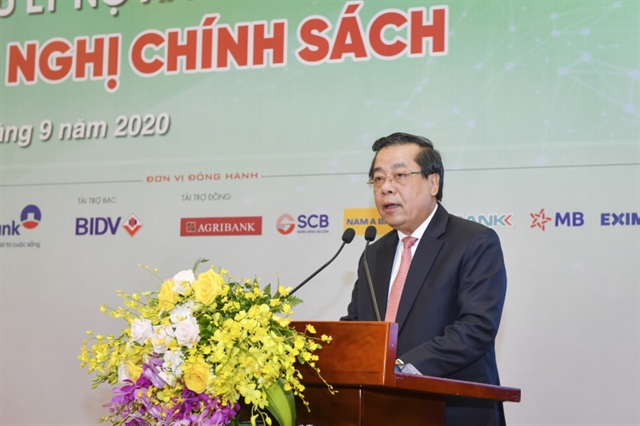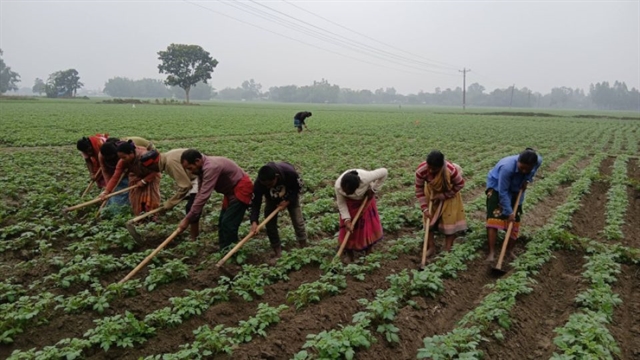 Economy
Economy

The Government has directed the State Bank of Việt Nam (SBV) to add non-performing loan (NPL) settlement regulations under Resolution No.42/2017/QH14 into the revised Law on Credit Institutions, SBV’s deputy governor Nguyễn Kim Anh said on Wednesday.

|
| State Bank of Việt Nam's deputy governor Nguyễn Kim Anh speaks at the forum. Photo SBV |
HÀ NỘI — The Government has directed the State Bank of Việt Nam (SBV) to add non-performing loan (NPL) settlement regulations under Resolution No.42/2017/QH14 into the revised Law on Credit Institutions, SBV’s deputy governor Nguyễn Kim Anh said on Wednesday.
Addressing a forum on Việt Nam’s banking industry in 2020 held in Hà Nội, Anh said the restructuring of the credit institutions system, in association with bad debt handling, has been one of the key tasks of the banking industry during the 2016-20 period.
The National Assembly issued Resolution No.42/2017/QH14 in 2017 as a pilot programme for the first time to speed up the bad debt handling of credit institutions.
"The resolution has created positive changes and proved effective in the handling of bad debts and restructuring of credit institutions in the past few years", Anh said.
He said credit institutions have so far followed the resolution to build and implement their restructuring plans associated with bad debt handling in the 2016-20 period. As a result, credit institutions' credit quality has improved with their on-balance-sheet NPL ratio controlled below 2 per cent. Their size, financial strength, governance capacity and transparency have been also improved significantly, Anh added.
Besides, based on the resolution, inspection and supervision of competent authorities over credit institutions have been strengthened, which have contributed to removing cross-ownership of groups of shareholders in the institutions.
Nguyễn Đăng Phi, SBV’s deputy chief inspector, reported the NPL ratio of the banking sector has been gradually decreasing over the years, from 2.46 per cent at the end of 2016 to 1.99 per cent, 1.91 per cent and 1.63 per cent at the end of 2017, 2018 and 2019, respectively.
On average, the banking industry recovered some VNĐ6.92 trillion (US$298.27 million) of bad debts per month by the end of July this year, much higher than the rate of VNĐ3.94 trillion in the 2012-17 period.
However, deputy governor Anh noted the COVID-19 pandemic this year had adverse impacts on the restructuring and bad debt settlement of credit institutions in the 2016-20 period.
"If the pandemic continues, causing production and business to stagnate and affect the country’s economic growth adversely, the credit risk will rise and the pressure of bad debt will be very high. Therefore, meeting the Government’s targets of controlling bad debts is still a huge challenge for the banking industry," Anh said.
According to Đỗ Giang Nam, deputy general director of the Vietnam Asset Management Company, despite its effectiveness, Resolution 42 is only a pilot programme and took effect for five years from August 15, 2017.
Therefore, Nam said, if there were no other regulations to replace the resolution after it expires, bad debt buyers would be concerned, causing a delay in the banking industry’s bad debt settlement. — VNS




